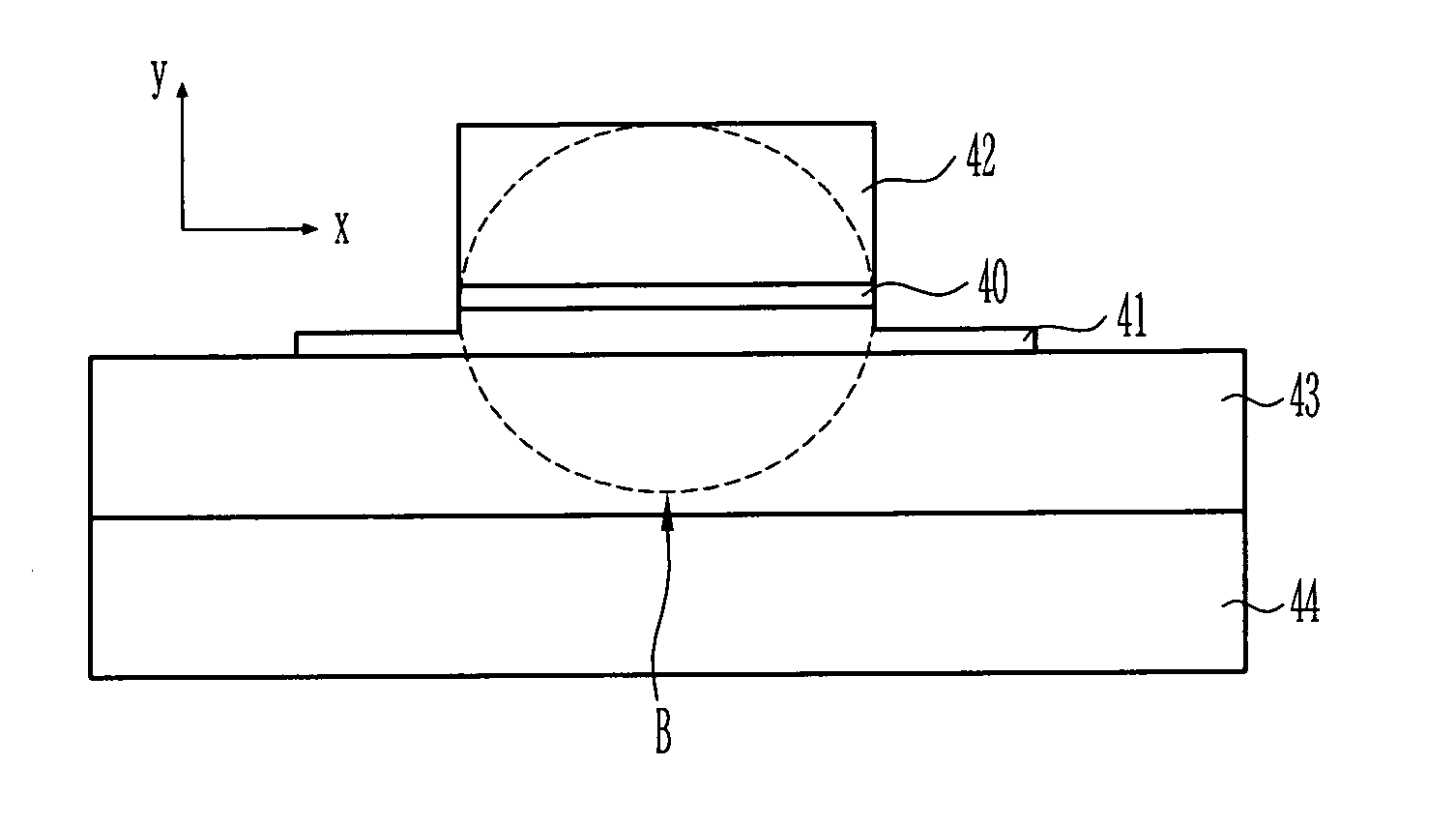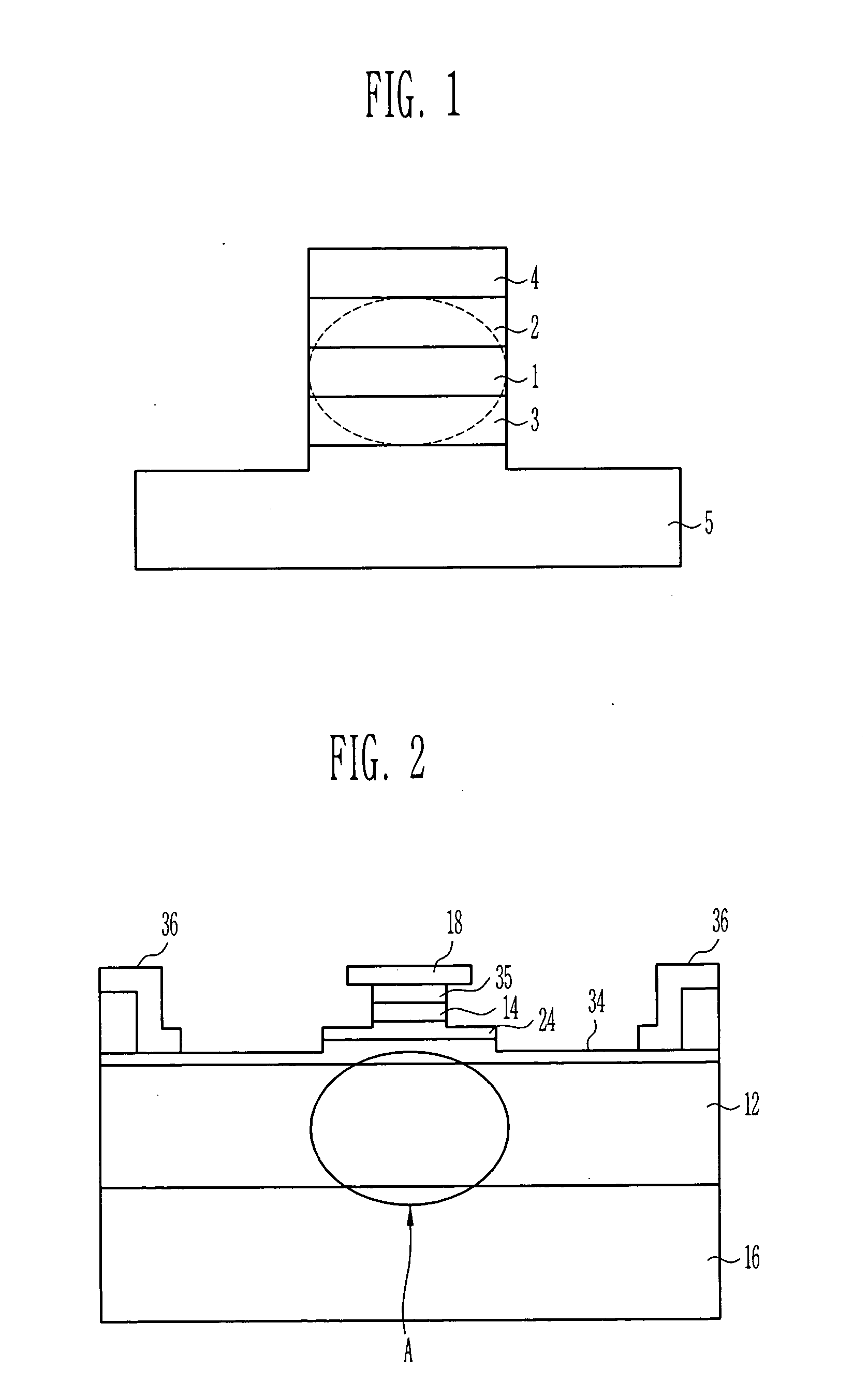Waveguide photodetector
a photodetector and waveguide technology, applied in the field of waveguide photodetectors, can solve the problems of difficult manufacturing such a structure, increase of capacitance, and ineffectiveness of semiconductor waveguides, and achieve the effects of low operating speed, high efficiency, and high operating speed
- Summary
- Abstract
- Description
- Claims
- Application Information
AI Technical Summary
Benefits of technology
Problems solved by technology
Method used
Image
Examples
Embodiment Construction
[0025] Now, the preferred embodiments of the present invention will be described in detail with reference to the accompanying drawings.
[0026]FIG. 3 is a cross-sectional view for explaining a waveguide photodetector according to the present invention.
[0027] An n-cladding layer 43, a non-doped spacer 41, an absorbing layer 40, and a p-cladding layer 42 are sequentially formed on a substrate 44. Predetermined portions of the p-cladding layer 42, the absorbing layer 40, and the spacer 41 are etched up to some depths, respectively. At that time, the depths of etching are adjusted, so that the central axis of light can be coincident with the central axis of the absorbing layer 40.
[0028] Band gap of the spacer 41 is larger than that of the absorbing layer 40 and smaller than or equal to that of the n-cladding layer43. Index of refraction of the spacer 41 is approximately equal to that of the absorbing layer 40 and larger than or equal to that of the n-cladding layer 43. The absorbing la...
PUM
 Login to View More
Login to View More Abstract
Description
Claims
Application Information
 Login to View More
Login to View More - R&D
- Intellectual Property
- Life Sciences
- Materials
- Tech Scout
- Unparalleled Data Quality
- Higher Quality Content
- 60% Fewer Hallucinations
Browse by: Latest US Patents, China's latest patents, Technical Efficacy Thesaurus, Application Domain, Technology Topic, Popular Technical Reports.
© 2025 PatSnap. All rights reserved.Legal|Privacy policy|Modern Slavery Act Transparency Statement|Sitemap|About US| Contact US: help@patsnap.com



